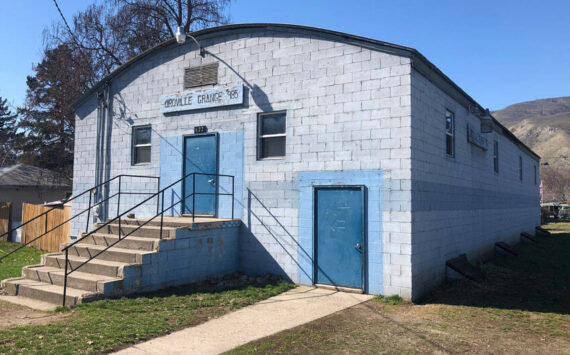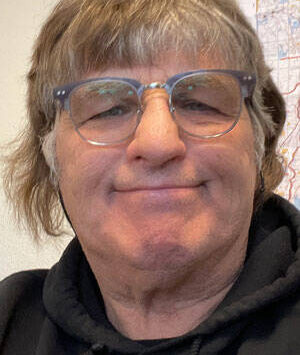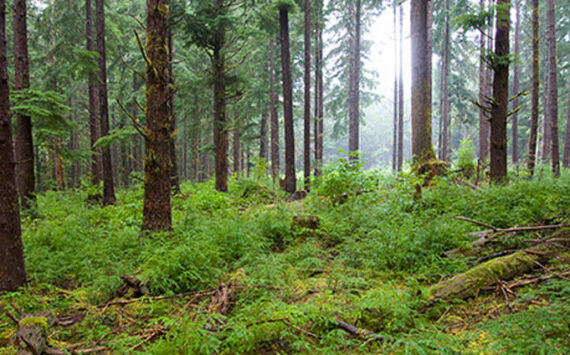CHESAW – The environmental group Okanogan Highland Association is warning that mining activities at the Buckhorn Mountain Project are adversely impacting local water quality
OHA recently published a report they say outlines the problem at the gold mine and are recommending that steps be taken to protect the water resource. The report titled, “Analysis of Water Quality Impacts at the Buckhorn Mountain Mine and Recommendations for Improvements” was prepared by Dr. Ann Maest of Stratus Consulting and shared with the state Department of Ecology and other regulatory agencies.
“The report was prepared to assist with efforts by Kinross to understand and remediate the downstream increases in contaminants coming from the mine. Ecology’s hydrogeologist responsible for water quality at the mine retired in June 2010, leaving a significant void in the agency’s ability to provide oversight and enforcement,” said David Kleigman, director of the Okanogan Highland Assocaiton (OHA).
The group says the report is a response to contaminant increases in Gold Bowl Creek, located directly below the mine, that required the mine to improve its management measures. Kleigman said OHA has found that contaminant increases around the mine are more extensive than previously reported. The OHA report provides an overview of: important events at the mine; violations and orders submitted by Ecology; information on water quality standards and exceedences that have occurred but were not noted by Kinross or Ecology; and adverse environmental effects that have occurred and their current status. The report proposes recommendations for actions that could be taken by Kinross to increase environmental protection.
“OHA hopes this report will help Ecology’s new hydrogeologist get up to speed on the water quality problems at the Buckhorn Mine and that modifications will be made to the management plans so that contaminants from the mine will be intercepted and treated before they enter ground and surface water,” said Kleigman.
According to the group, the use of reverse osmosis has improved the quality of treated water discharged to the environment and lowered some contaminants downstream from the discharge points, but others related to blasting have been decreasing more slowly. Water quality in the current underground mine is substantially worse than predicted before mining began and the quality is expected to worsen considerably as mining progresses deeper underground, they say.
“The actual contaminants in the rock they are working in now are worse than they were and the new rock where they are headed is even worse. Water quality will continue to decline and once acidification of mine water has begun it is pretty hard to stop,” Kleigman said.
The group says the mine is supposed to be a zero discharge facility, meaning no pollutants are allowed to escape the mine into the environment. Treated water must meet the standards in the discharge permit. All other ground and surface water must meet state water quality limits.
However, they say, contaminants are showing up in ground and surface water monitoring stations below the mine, which means that the dewatering system is not isolating the mine from the environment. In April 2009, Crown was fined $40,000 for failure to maintain a “capture zone” under the mine. There is no indication that a reliable capture zone has been established, according to the OHA.
“There are several things they could be doing that in theory would reduce acid water which forms when the acidified rock mixes with water and air,” Kleigman said. “They could be using shotcrete on the walls of the mine before backfilling and this would reduce the reaction between the waste rock and the air and water.”
Although often at odds over mining since the project was first proposed over 20 years ago, OHA has a good working relationship with Kinross Gold and the Buckhorn Project, according to Kleigman
“We sent the report to Kinross last week, we are committed to talk with them and find a solution, we both want to try to do the right thing to make mining clean,” he said.
OHA is a local non-profit conservation organization that works to protect the quality of water in the Okanogan Highlands. In April 2008, after appealing the underground mine, OHA entered into a settlement with Kinross that included funding for OHA to conduct independent monitoring. The full text of the report is available at: www.okanoganhighlands.org/monitoring/OHAdocs.







